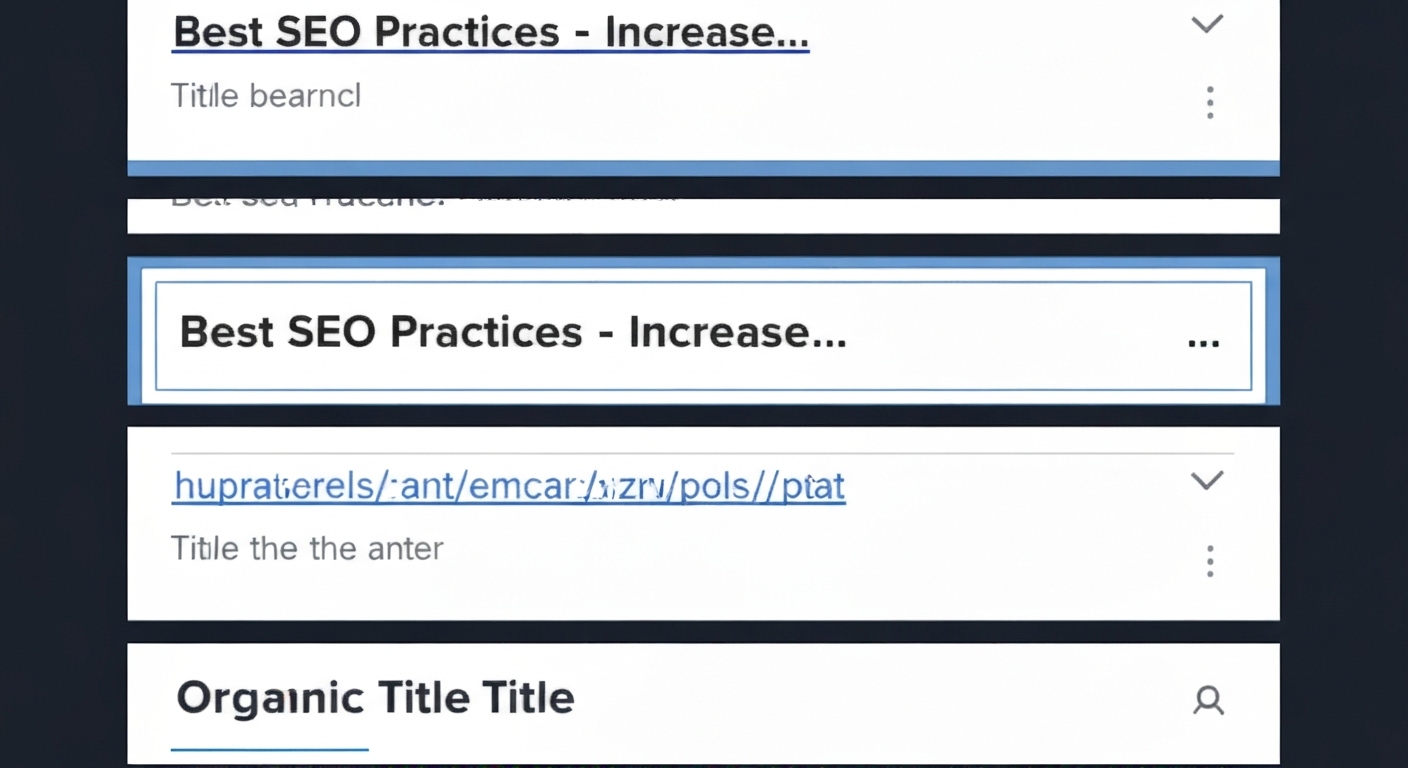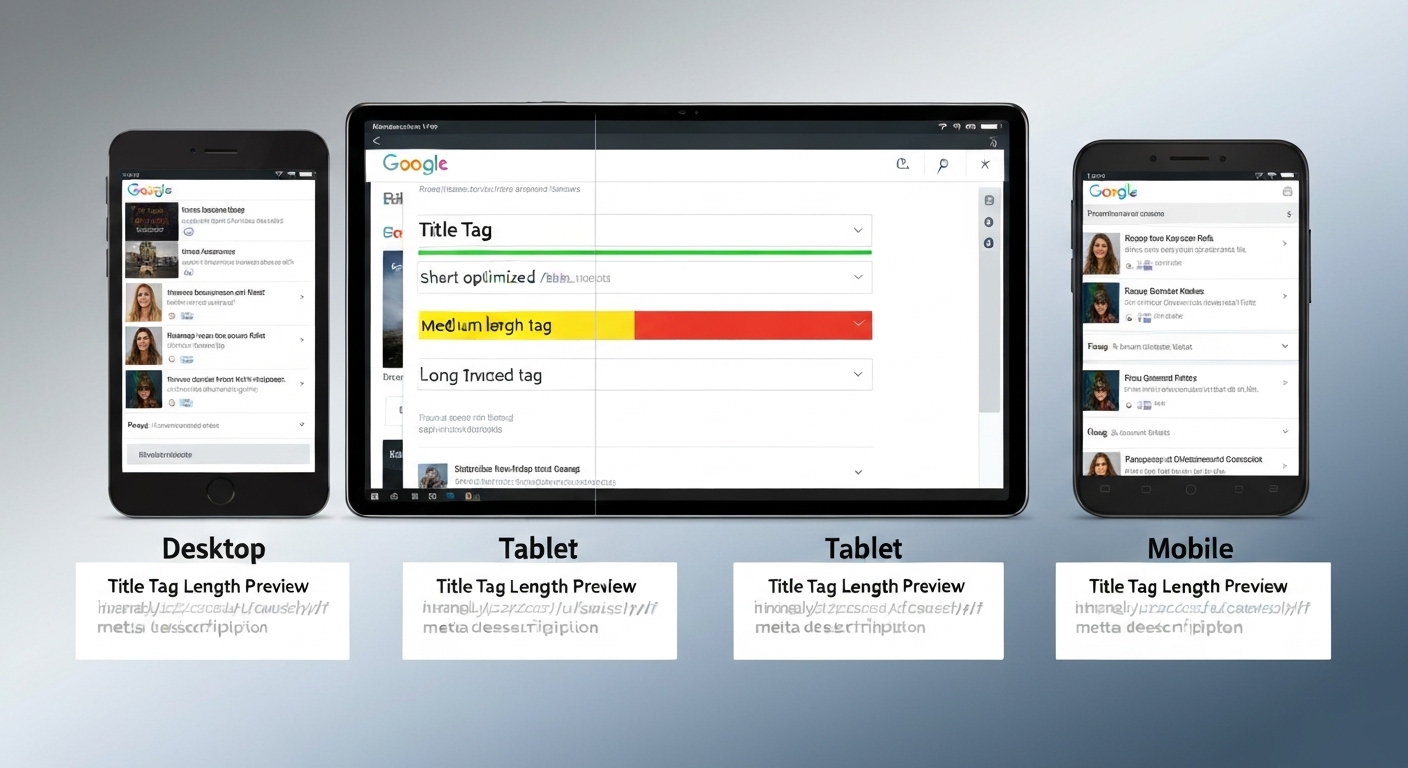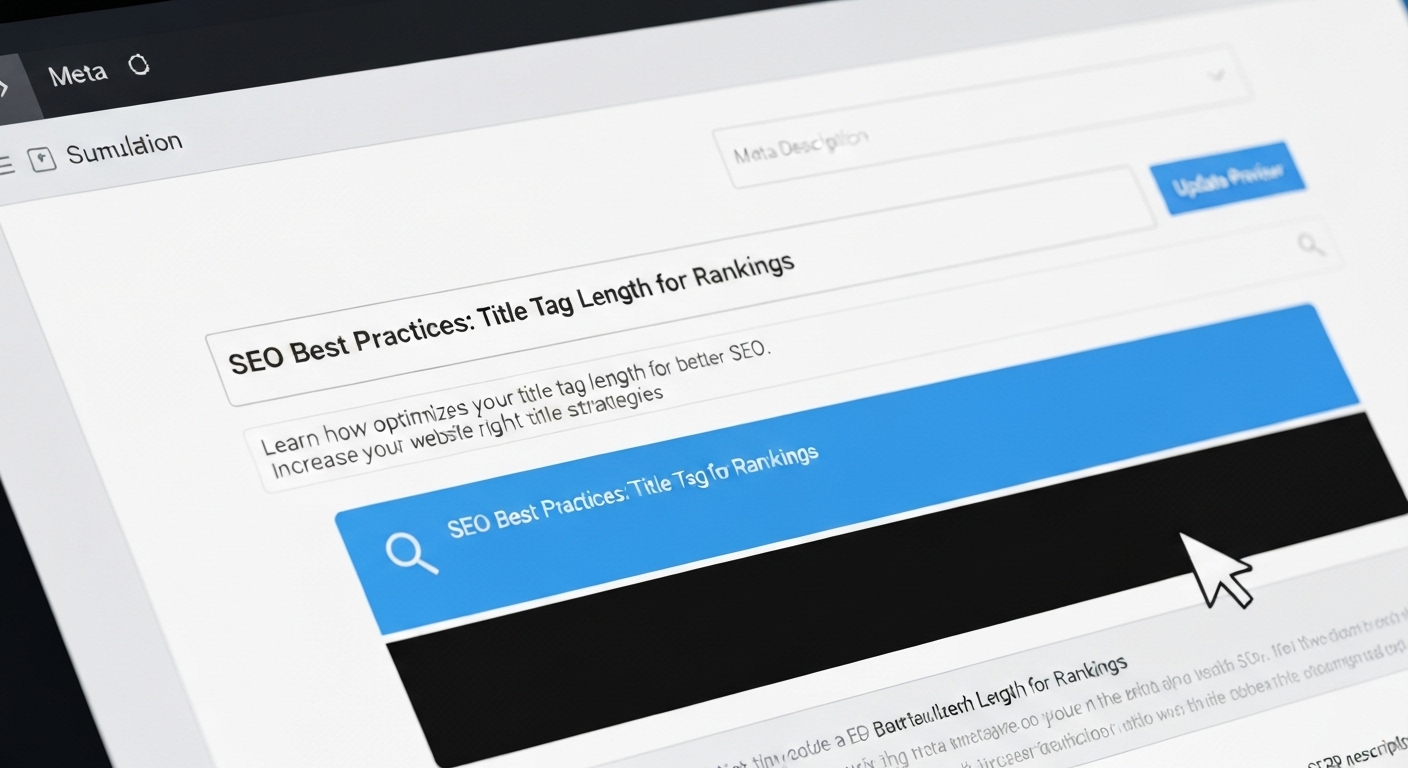Title Tag Length for SEO : A Comprehensive Guide
Title tag length for seo is a critical aspect of optimizing your website for search engines. It’s one of the first things Google and other search engines use to understand what your page is about. A well-optimized title tag can significantly improve your website’s visibility and click-through rate (CTR).
Why Title Tag Length Matters for SEO
The length of your title tag directly impacts how it appears in search engine results pages (SERPs). Search engines have limited space to display title tags, and if your title is too long, it will be truncated, often with an ellipsis (…). This can obscure important keywords and make your listing less appealing to users.

Impact on Click-Through Rate
A clear, concise, and compelling title tag encourages users to click on your website in the SERPs. When your title tag is truncated, it can lose its impact and potentially reduce your CTR. A shorter, more focused title tag allows you to highlight the most important information and entice users to visit your site.

Relevance and Keyword Optimization
Search engine optimization (SEO) relies heavily on relevant keywords. The title tag is a prime location to include your primary and secondary keywords. However, stuffing your title tag with too many keywords can appear spammy and may negatively impact your rankings. Aim for a natural and readable title that accurately reflects the content of your page.
The Ideal Title Tag Length: Finding the Sweet Spot
While there’s no exact character limit, the general recommendation for seo title tag length is around 50-60 characters, or approximately 600 pixels wide. This ensures that your title tag is fully visible on most devices and search engines. Keep in mind that pixel width is often a more accurate measure than character count, as different characters have varying widths.
Google’s Title Tag Display
Google title tag display varies slightly depending on the device and the search query. However, adhering to the 50-60 character guideline generally ensures that your title tag remains intact for most users. It’s always a good idea to check how your title tags appear in Google’s search results using a SERP simulator.

Mobile vs. Desktop
Title tag display can also differ between mobile and desktop devices. Mobile screens are smaller, so it’s even more important to prioritize the most important keywords at the beginning of your title tag to ensure they are visible to mobile users. Prioritizing key information increases the chances that mobile users see the core message.
Best Practices for Title Tag Optimization
Optimizing your title tags involves more than just adhering to the recommended length. Here are some title tag best practices to follow:
- Include your primary keyword: Place your primary keyword as close to the beginning of the title tag as possible.
- Use secondary keywords naturally: Incorporate relevant secondary keywords to provide additional context and improve your chances of ranking for related search terms.
- Write compelling copy: Craft a title tag that is both informative and engaging. Entice users to click on your website by highlighting the benefits of visiting your page.
- Avoid keyword stuffing: Don’t overload your title tag with too many keywords. Focus on creating a natural and readable title that accurately reflects the content of your page.
- Use separators wisely: Use separators like hyphens or vertical bars (|) to separate different elements of your title tag.
- Unique title tags: Ensure each page on your website has a unique title tag. Duplicate title tags can confuse search engines and negatively impact your rankings.
Using Keywords Effectively
Strategic keyword placement is crucial for title tag optimization. By incorporating relevant keywords, you signal to search engines that your page is relevant to specific search queries. Aim for a balance between keyword optimization and readability to create a title tag that appeals to both search engines and users.
The Importance of Unique Title Tags
Having unique title tags across your entire website prevents keyword cannibalization and tells search engines that each page serves a distinct purpose. This helps search engines properly index and rank your pages, maximizing your overall visibility.
Examples of Effective Title Tags
Here are some examples of effective title tags based on different types of content:
- Product Page: Buy [Product Name] Online – [Website Name]
- Blog Post: [Blog Post Title] – [Website Name]
- Category Page: [Category Name] – [Website Name]
- Local Business: [Business Name] – [Service] in [Location]
Tools for Analyzing Title Tag Length and Optimization
Several online tools can help you analyze your title tag length and optimization. These tools allow you to preview how your title tag will appear in search results and identify potential issues. Some popular tools include:
- SERP simulators
- SEO audit tools
- Website analyzers
SERP Simulators
SERP simulators are a quick and easy way to check how your title tag will appear in Google’s search results. Simply enter your title tag and description, and the tool will show you a preview of your listing.

SEO Audit Tools
SEO audit tools provide a comprehensive analysis of your website’s SEO performance, including title tag optimization. These tools can identify issues such as missing, duplicate, or overly long title tags.
Metadata and Title Tags
Metadata, including title tags and meta descriptions, provides crucial information to search engines about the content of your pages. Well-optimized metadata can improve your website’s visibility and attract more organic traffic. Pay close attention to both title tags and meta descriptions for maximum SEO impact.
Optimizing Meta Descriptions
While not a direct ranking factor, meta descriptions play a vital role in influencing click-through rates. A compelling meta description can entice users to click on your website, even if it’s not the top result.
Title Tag Length and Website Ranking
While title tag length for seo is just one factor in the overall SEO landscape, it is an important one. Optimizing your title tags can improve your website’s visibility, click-through rate, and ultimately, your website ranking. By following the best practices outlined in this guide, you can ensure that your title tags are working for you, not against you.
Furthermore, understanding and implementing effective SEO strategies, including seo title tag optimization, is crucial for long-term online success. Remember to prioritize user experience and create valuable content that resonates with your target audience.
Conclusion
Mastering the art of title tag length for seo is an ongoing process. By staying informed about the latest best practices and monitoring your results, you can continuously improve your website’s performance in search engine results. Remember to focus on creating clear, concise, and compelling title tags that accurately reflect the content of your pages and entice users to click through. Keep track of your title tag optimization efforts to measure their impact on your website traffic and rankings.
For more information on SEO best practices, you can visit developers.google.com.
Also, consider checking out our services at flashs.cloud to further enhance your SEO strategy.
HOTLINE
+84372 005 899


